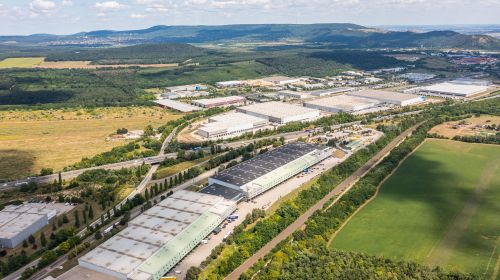The new face of the Warsaw business district
Warsaw’s Central Business District (CBD) is currently delineated by Jana Pawła II Avenue, Solidarności Avenue, Hoża, Krakowskie Przedmieście and Nowy Świat streets. The City Centre expanded north up to Gdański Railway Station, west to Karolkowa Street and south to Unii Lubelskiej Square. It abuts the Vistula River in the east. Warsaw’s central office district went through a transformation process in recent years following the delivery of a number of modern office developments such as Q22 or Warsaw Spire, which have already been acclaimed as unique and landmark schemes. However, in addition to modern buildings and futuristic skyscrapers, this area is also home to second-generation offices developed before 2000 and historical buildings which form an integral part of the capital city’s centre.
Refurbishments of aging office buildings in the CBD accounted for only 20% of the district’s total office supply in the years 2010-2016. This was due largely to a relatively large pool of development lands available for new office projects which dominated the Warsaw market in terms of office supply. That period saw nearly one-fourth of the CBD’s current office stock developed.
Most development plots were secured by developers for new projects some time ago. By 2020, more than 600,000 sq m of office space is expected to be delivered to the city centre market. Office schemes under construction include “Varso Place”, developed by HB Reavis from Slovakia near the junction of Chmielna Street and Jana Pawła II Avenue, Golub Gethouse’s “Mennica Legacy Tower” at the crossroads of Prosta and Żelazna streets, and “J44”, developed jointly by Commerzreal and S+B Gruppe AG at 44 Jerozolimskie Avenue, a site where Universal once stood. This means that as in London or New York, mutatis mutandis, the highest concentration of businesses is the very heart of Warsaw’s city centre and its immediate vicinity such as the eastern part of Wola or Powiśle.
In addition to new developments in the city centre, there is a lot going on in this market in terms of upgrading of historical buildings and schemes developed before 2000. The last two years saw an increase in upgrading and revitalisation projects. Examples include Hala Koszyki, Ethos at Trzech Krzyży Square or EC Powiśle, which is currently under construction.
Revitalisations are being carried out to bring disused properties back to life and – by combining an appreciation of the past and modern functionality – to create unique places in their respective environments which will benefit property owners, users and city inhabitants alike. Outdated buildings, once upgraded to present-day technological standards, will be able to compete with new developments for tenants. Refurbishments and revitalisations are expected to provide approximately 200,000 sq m of office space by the end of 2020.
The key driver behind upgrading and revitalisation projects which require major capital expenditure is an opportunity to add value to property. Prime commercial buildings featuring appropriate technical standards and timeless designs remain the most attractive and sought-after investment products. In addition, property owners intending to sell their assets want to take advantage of the record-high investor activity. In 2017, investment volumes on the Polish commercial real estate market totalled EUR 5.0bn, close to 2016’s figure of approximately EUR 5.2bn.






















































An open door to redefining the commercial real estate market in Poland
An open door to redefining the commercial real estate market in Poland
The investment slowdown in the commercial real estate sector that we have been observing in Poland for over a year is primarily the result of the tightening of monetary policy arou ...
Walter Herz
The retail sector is not slowing down
The retail sector is not slowing down
The pandemic, conflict in Ukraine as well as inflation and high interest rates that recent years have brought have reshaped the real estate market around the world. The global slow ...
Walter Herz
Retail parks – current opportunities
Retail parks – current opportunities
Over the last few years, retail parks in Poland were mostly developed in smaller formats, around 5,000 sqm, either adding to the existing retail landscape or introducing modern ret ...
Avison Young